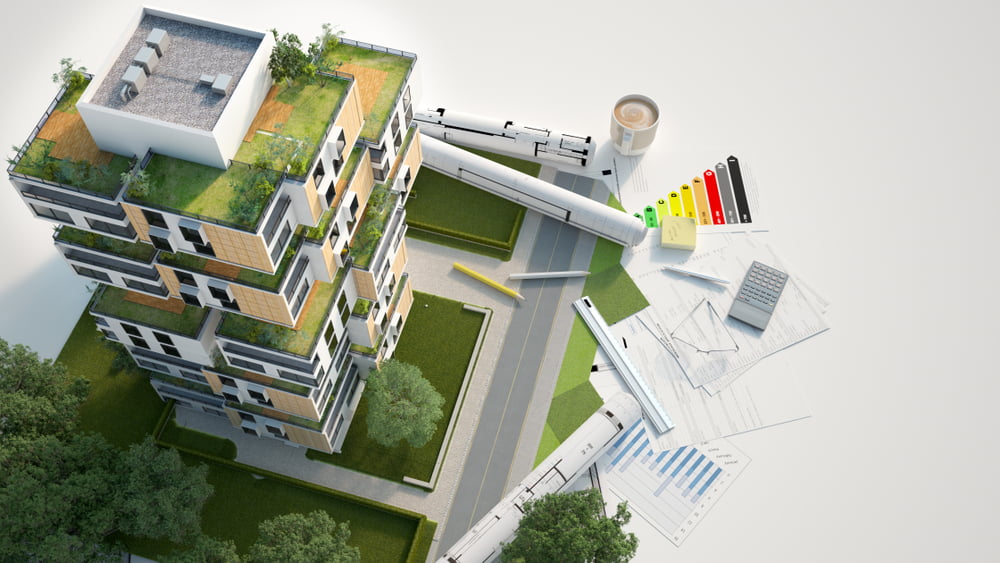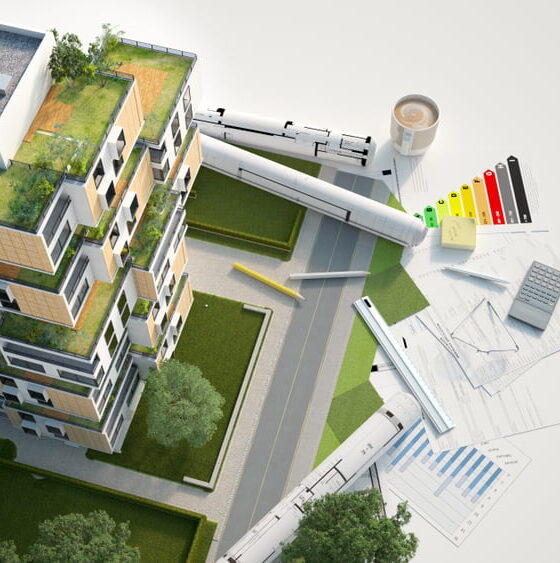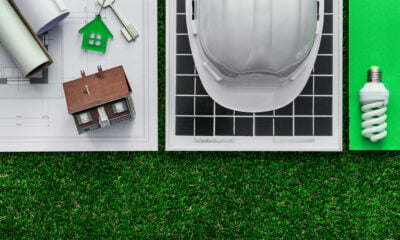

Environment
How to Ensure Your Home’s Eco-Friendly During Construction?
The building of your new home is an exciting moment. It’s also a relatively easy time to let your eco-friendly ideals lapse. However, a few simple ways can ensure your home is eco-friendly during construction, especially since designing an eco-friendly residence is now faster and more economical than ever.
Using recycled materials such as wood, metal, and glass when building your property can help it be more eco-friendly without compromising design or structural integrity. It effectively reduces overall construction costs and waste. Green roofing can be another standard option to ensure eco-friendliness during construction. But that’s just the tip of the iceberg.
7 Methods to Guarantee Your Home is Ecofriendly During Construction
1. Well Pump
A well pump can help you save water and make your home more environmentally friendly. Using a well pump, you can avoid utilizing water from your municipality’s water supply. This can save you money on your water bill by conserving water and electricity.
You are not consuming as much water as you would if you were using municipal water, primarily because the water purification procedure consumes a significant amount of water and energy. You save water and energy by drilling your own well, which is better for the environment.
Furthermore, you are not polluting the public water supply if you have your own well. Chemical compounds are utilized to purify water after being treated in a water treatment facility. These contaminants may end up in the public water supply, contributing to water contamination.
If you need professional help in doing this, an experienced company will offer not only drilling but well pump repairs as well, says GroundSource Inc of Wisconsin. So if you’re worried about drilling and pump maintenance costs, you can always expect the expert team at Ground Source to take care of your needs.
2. Solar Panels
Solar energy is a healthier and more environmentally friendly substitute for conventional energy. Solar cells do not emit greenhouse gases, which aids in mitigating the harmful impact of climate change.
Installing solar panels allows families to become carbon neutral, get the cost-saving perks of solar, and feel good about their environmental stewardship.
The sun is a renewable form of energy. In contrast, fossil fuels are a finite power source that harms the environment when mined and distributed. By using solar arrays, you can ensure that you use fewer carbon fuels, which might have a more significant impact than you may imagine.
Once implemented, solar arrays necessitate little upkeep to keep working smoothly. They can certainly survive a decade or more before you need to replace them.
A solar panel just requires a continuous stream of solar energy to function. The fact that they make no contribution to either water or noise pollution is one of the less talked about advantages of using solar power. Install solar panels to ensure that your property is environmentally friendly throughout the building.
3. Modular Construction
Modular construction refers to producing prefabricated structures in off-site facilities and transferring them to a job site for assembly. While modular forms adhere to similar construction laws and requirements as traditional systems, they are made up of smaller premade parts known as modules constructed on-site.
A great benefit gained from modular home construction is waste management. Because modular homes are manufactured in workshops to exact proportions, there isn’t any need for excess material, which considerably decreases wastage.
Prefabrication of beams, brackets, and other components can cut wastage by 52%. For interior surfaces, drywall, and roofs, modular buildings frequently use the most recent recycled building materials.
Furthermore, because modular buildings are entirely movable, they can be readily transferred off a site to be deconstructed and sustainably discarded or utilized in another location without demolition.
Another significant environmental benefit of modular construction is the decrease in emissions generated by frequent site shipments. Site deliveries account for a massive amount of construction pollutants.
Modular construction is more cost-effective than traditional building methods because of shorter construction durations, lower shipping and labor expenses, and lower-cost supplies.
4. Green Roofs
A green roof, often known as a rooftop terrace, is a botanical layer that grows on a roof. Rooftop gardens offer shade, absorb warm air, cut energy expenditures, and lower the temperature around the roof surface.
Green roofs save electricity by offering adequate insulation to your structure and capturing stormwater, reducing the strain on drainage systems. The solar panel efficiency is increased, thus lowering your total energy bills. This is why installing green roofs makes sense even if you don’t care about eco-friendliness.
The density of people and buildings in cities creates microclimates with much higher temperatures, less rainfall, and more vulnerability to natural calamities. As a consequence, green roofs have the potential to significantly reduce the urban heat island effect.
Green roofs can help to mitigate the heat island effect in cities and other constructed areas with minimal vegetation, especially during the day. Green roof surface temperatures can be 30-40°F cooler than traditional roof temps. They can diminish city-wide air temperature by up to 5°F.
The greenery reduces air pollution and reduces dust in the environment. The vegetation also absorbs carbon from the atmosphere, aiding in tackling climate change and enhancing air quality by creating oxygen. As a result, green roofing can make your property more environmentally friendly during construction.
5. Eco-friendly Insulation
Home insulation is crucial for everyone who aspires to save energy costs while protecting the environment. To reduce your carbon impact, you should consider eco-friendly house insulation choices.
Employing eco-friendly insulators will make your residence greener while lowering your utility expenses. You will use your furnace less if your home is adequately protected, allowing you to cut your carbon footprint.
Insulation is a simple and cost-effective way to minimize the cost of heating and cooling while improving comfort and efficiency. When something concerns living in a greener, healthier household, secure and renewable insulation materials are the wisest option, and replacing your attic insulation provides one of the simplest and quickest ways to get started.
Insulating your home would also make it more comfortable all year because you will have a steady internal temperature. It will often remove moisture from the walls and ceilings.
6. Recycled Materials
Using recyclable, energy-efficient materials reduces your environmental impact. Eco-friendly building supplies can also reduce construction time. Furthermore, it keeps rubbish out of landfills.
Using recyclable materials in your project, whether entirely or partially, will significantly minimize its energy use. This is because the energy required to process recycled materials is considerably less than that needed to harvest or manufacture new ones.
Recycled aggregates and certain other commodities can last just as long as non-recyclable equivalents. This implies that choosing an eco-friendly, cost-effective option does not require sacrificing craftsmanship or reliability.
Developers gain economically from reclaiming and repurposing construction materials. Many commodities, such as aluminum, are so cheap to recycle that processing plants pay customers for their surplus inventories. Builders can generate passive money by collecting and selling obsolete construction materials.
There are several methods for using recyclable plastic in your building construction. One possibility is to use recycled concrete. Cement is one of the most extensively used building materials, and it may be created from recyclable materials.
Another possibility is to utilize reclaimed wood. Recycled wood can be used for various purposes, including framing and flooring. Metals, glass, and plastics can all be recycled and reused in buildings. Metals can be utilized for construction, piping, and wiring. Windows and doors can be made of glass. Plastics have a wide range of applications, including insulation and pipework.
7. Landscaping
Landscaping is all too frequently an afterthought when constructing a home. Most people only think about it after builders have loaded up their equipment and left a devasted scene for you to deal with. Landscaping should be an integral aspect of your home, improving its utility and shape while also ensuring that your outdoor space is pleasant and safe to use.
You may ensure environmentally friendly landscaping by utilizing plants native to your area. This vegetation will be more tolerant to insects and pathogens, requiring less water and fertilizer.
Native plants are frequently indigenous crops tailored to the specific environment. Drought-tolerant plants can assist you in saving money on your water bill by reducing the quantity of water you use for landscaping.
Choosing drought-tolerant plants is an underutilized approach to employing horticulture to make your dwelling eco-friendly during development. Drought-tolerant plants can usually survive with little to no irrigation.
Eco-friendly landscaping seeks to reduce the energy consumed in traditional landscaping while benefiting the environment. Reduced water usage, fertilizer, and pesticide use composting, growing your own veggies and fruits, and deliberately planting native plants based on sun or shade requirements are all environment-friendly landscaping.
Final Words
Construction and renovation can have a detrimental effect on the environment. The best part is that there are strategies to reduce your development project’s environmental impact and make your home eco-friendly.
That’s why we have addressed all you need to understand in great depth to ensure that your house is eco-friendly throughout construction. This will assist in safeguarding the natural environment while making your home more sustainable for yourself and your family.


























